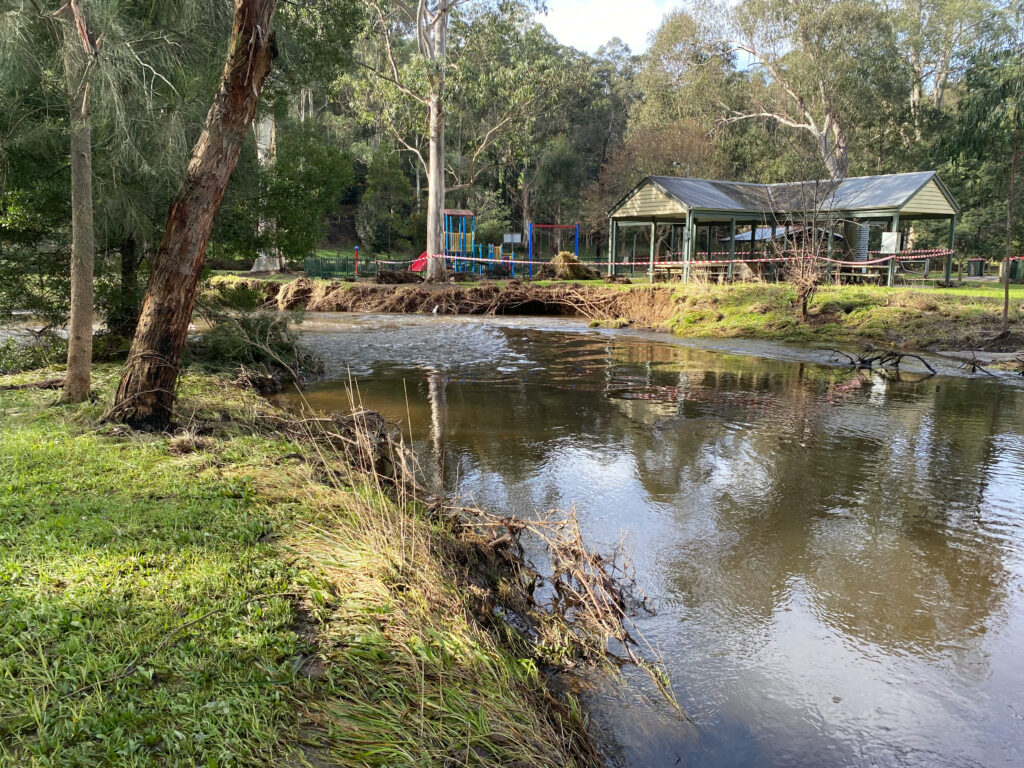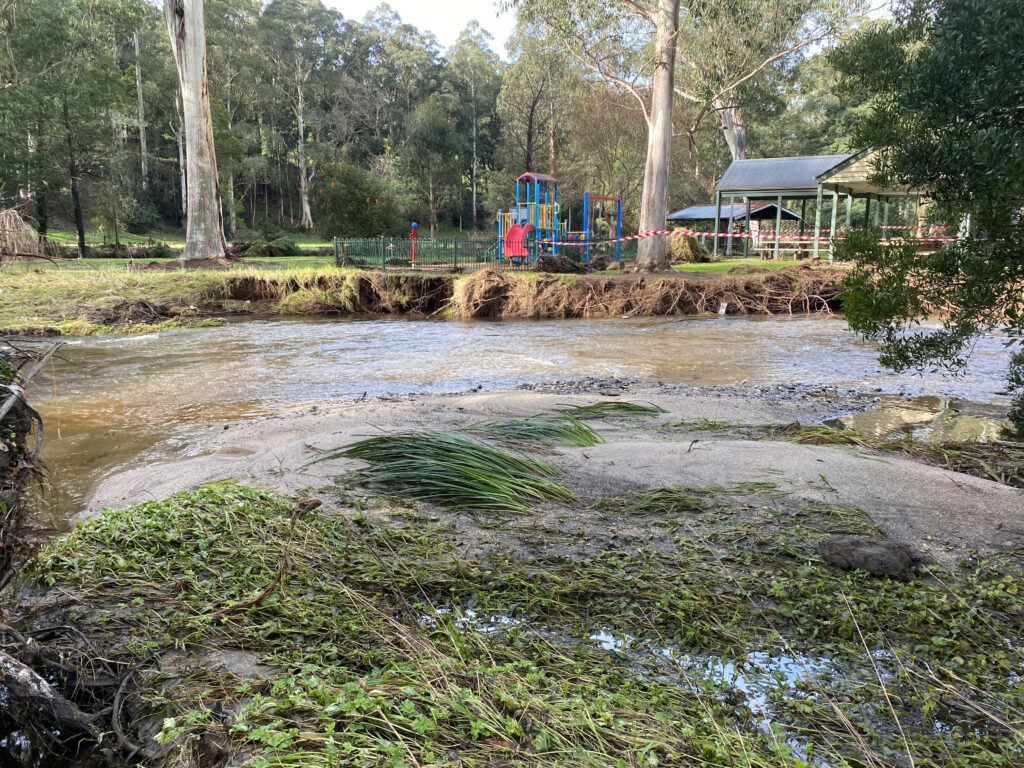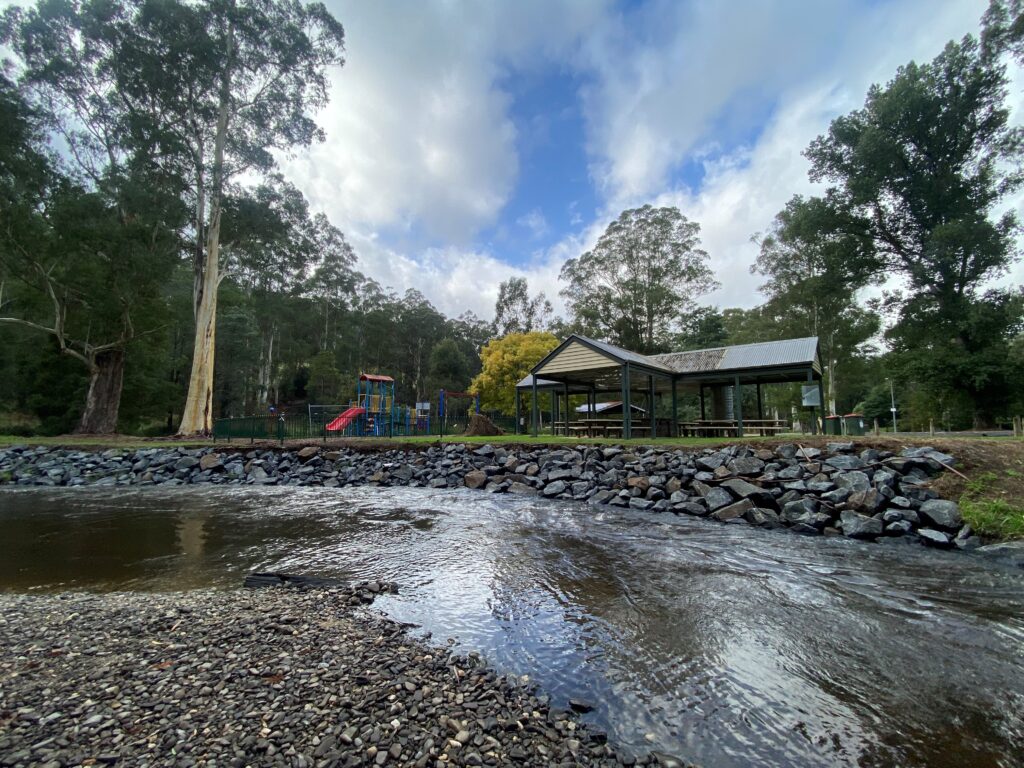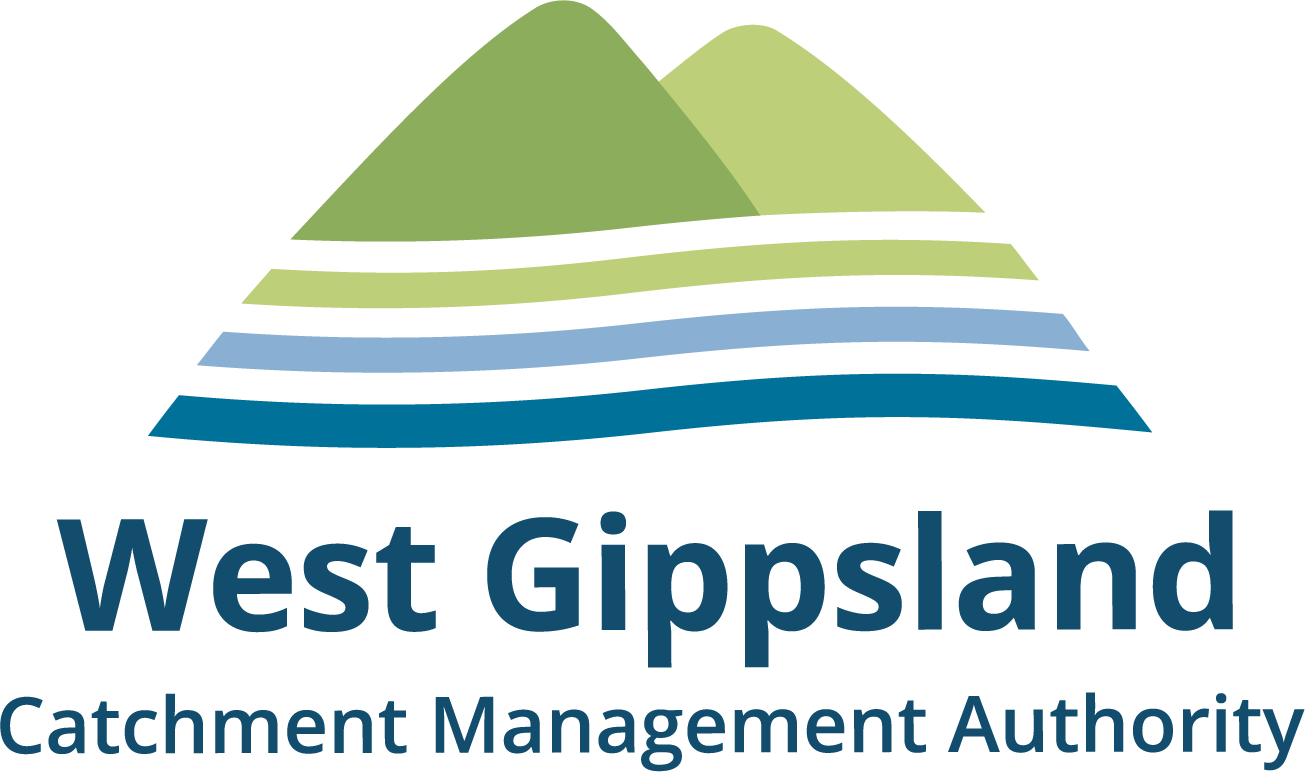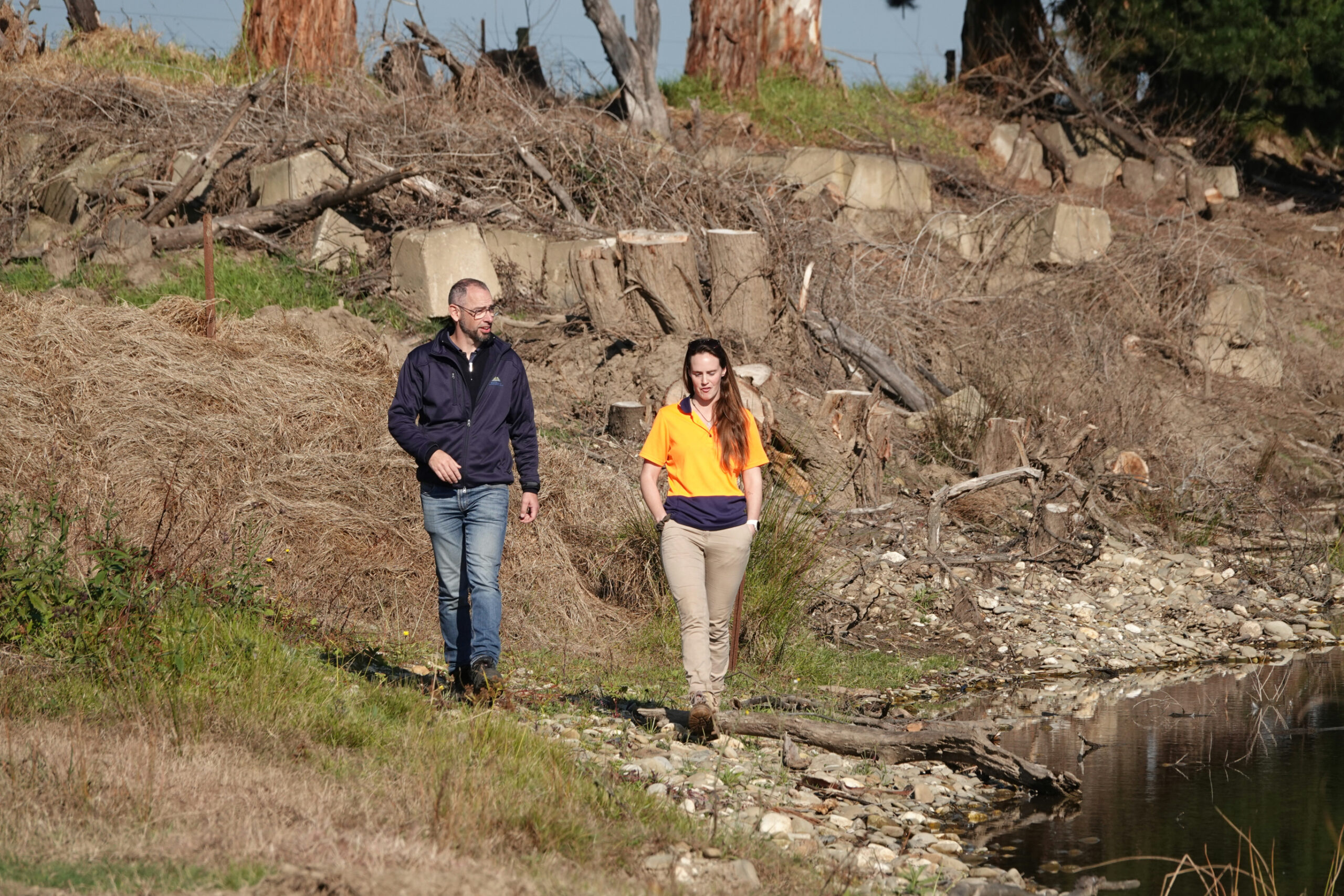Farmers share irrigation innovation
Funding of up to $30,000 is now available for the next round of irrigation demonstration trials.
Expressions of interest are open until 4pm Tuesday 26 November 2024.
For more information, download the Landholder booklet or go to Agriculture Victoria
West Gippsland Catchment Management Authority (CMA), in partnership with Agriculture Victoria, is excited to share the results of the Sustainable Irrigation Program Demonstration Trials, a two-year project aimed at showcasing the benefits of irrigation technology using real-life examples from local farms.
Across the project, dairy farmers in central Gippsland successfully trialled new technologies that demonstrate savings of time, money, water and nutrients while protecting the environment.
“The CMA has been working with farmers for over 25 years, helping to save water and keep nutrients on farm and out of the waterways, including the Gippsland Lakes,” said Bonnie Dawson, Sustainable Agriculture Project Officer at West Gippsland CMA.
“This latest project is another example of the CMA, Agriculture Victoria and farmers working together on innovation in sustainable irrigation techniques that benefit agriculture, the community and the environment.”
Four irrigators in the Macalister Irrigation District received grant funding to host demonstration sites on their farms. Two focused on best practice management of dairy effluent, with the remaining two focusing on technologies to increase water use efficiency and reduce energy emissions.
“The aim of the demonstration sites was to trial technology and showcase the results with the broader irrigator community through knowledge sharing and field days. In doing this we hope to encourage and support more farmers wanting to adopt similar techniques on their farms,” explained Bonnie.
Newry dairy farmer James Clyne trialled technology that enabled him to customise a pivot irrigation system to better suit the varying terrain and soil profiles of his 300-hectare property. He’s now seeing positive results of less water wastage and an increase in pasture production.
“We’ve noticed an increase in water use efficiency by 20%,” said James. “I would recommend this technology to anyone with a pivot. There are always areas (on farm) getting underwatered or overwatered and this technology just instantly helps with that.”
In Clydebank, organic dairy farmers Wilco Droppert and Sandra Jefford trialled software that could automate their sprinklers according to the amount of solar power available, saving hours of manual labour and maximising their water efficiency and solar energy use.
“Production of pasture has probably increased by at least 25% and the labour saving is just phenomenal. It’s also enabled us to integrate trees into the irrigation system which was not possible before,” said Wilco.
Tinamba dairy farmer Tom Gannon trialled a self-cleaning filter on his pivot irrigator to prevent disruptive and time-consuming blockages in the system when applying effluent.
“In the six months we’ve had the system I haven’t had to manually clean the filter or clean out the sprinkler heads on the pivot. This technology is doing the job, so we’re happy,” said Tom.
After modernising their irrigation infrastructure with an automated effluent distribution system, Jess and Steven Knight used the grant funding to measure the impact the system was having on soil health so they could make better decisions about where and when to apply effluent.
“Being able to distribute effluent on farm in a way that meant it wasn’t going back into the lakes and waterways was really important to us,” said Jess.
All four demonstration trials were completed in mid-2024 with outcomes and learnings now available to the farming community through a series of videos available on the CMA website and through upcoming field days run in partnership with Agriculture Victoria.
“We encourage all irrigators to watch the videos or come along to one of the farm walk events to see the technology in action, speak to the farmers about their experiences, and chat to us about adopting the technology on their farms,” said Bonnie.
Alexis Killoran, Senior Irrigation Extension Officer at Agriculture Victoria, said: “Together we can continue to reduce the environmental impacts of irrigation from the farm itself, all the way down to the Gippsland Lakes.”
This program is funded through the Victorian Government’s Sustainable Irrigation Program.
Farm Walk events:
Events are free but please register on the links below.
- Tuesday 17 September, Tinamba ‘Effluent filtration and utilisation
- Wednesday 2 October, Clydebank ‘Solar power automated fixed sprays
- Thursday 14 November, Newry ‘Optimising soil moisture Variable Rate Irrigation (VRI)’
Power and passion for the Agnes River
It’s all about the power and the passion on this episode of the podcast as we chat with some of the inspiring people involved in a twenty-year partnership project to restore the entire length of the Agnes River and protect the world-renowned Corner Inlet.
Guests:
- Tanya Cowell, Waterways Project Officer at West Gippsland CMA
- Richard (Richie) Allen, Project Delivery Officer at West Gippsland CMA
- Bryan Watterson, local landholder and member of Corner Inlet Landcare
Host:
- Sally O’Neill, West Gippsland CMA
Agnes River is on Gunaikurnai Country and begins in the Strzelecki Ranges, meandering its way into Corner Inlet near the town of Toora. It is well known for the Agnes Falls where the river cascades into a spectacular 59m drop into a deep picturesque gorge.
Last year the CMA removed the last remaining stand of willow trees on the Agnes – a special milestone for the CMA and the community members involved in this project.


For the love of the Tarwin
In this episode of the Gippslandscapes podcast, Sally, Matt, Jillian and Jenny take a walk along the Tarwin River and through Bald Hills Wetlands Reserve in South Gippsland to talk about coming together as a community to care for a catchment – in their ‘I Love The Tarwin’ project.
Featuring:
- Jillian Staton, President of the Tarwin Landcare Group and Chairman of the South Gippsland Landcare Network
- Jenny O’Sullivan, beef and sheep farmer in Tarwin Lower and committee member of the Tarwin Landcare Group
- Matt Bowler, Project Delivery Manager at West Gippsland Catchment Management Authority.
Host: Sally O’Neill, Communications Manager at West Gippsland Catchment Management Authority.



About the podcast
Gippslandscapes is an occasional podcast, highlighting the many people doing great things caring for the environment and improving the landscapes of our region. Whether they are farmers, “townies” involved in Landcare, or just someone with a passion to make the region a better place.
Each episode will feature one person or group and they are available wherever you get your podcasts. All episodes are archived on Zen-cast and Apple Podcasts.
If you’d like to provide feedback to the Gippslandscapes team you can drop them an email at here or post a review on iTunes.
Partnering to protect the Rainbow
Flowing through farmland in the floodplains between Cowwarr and Heyfield, Rainbow Creek is a short but significant waterway in the West Gippsland catchment.
For the past four years, we have been delivering the Thomson and Rainbow Management Plan to keep the Thomson flowing and to nurture the young, fast flowing Rainbow Creek.
Together with landholders, community and other partners we’ve been weeding, fencing, removing willows and planting native vegetation to strengthen the Rainbow, keep it healthy for local wildlife and communities and protect it from future events.
Watch our short video ‘Nurturing a rainbow – Managing the Thomson‘ below, to hear our Waterways Project Officer David Stork and Project Delivery Officer Elsa Burnell talk about the exciting work that’s been happening and what they hope to achieve next.
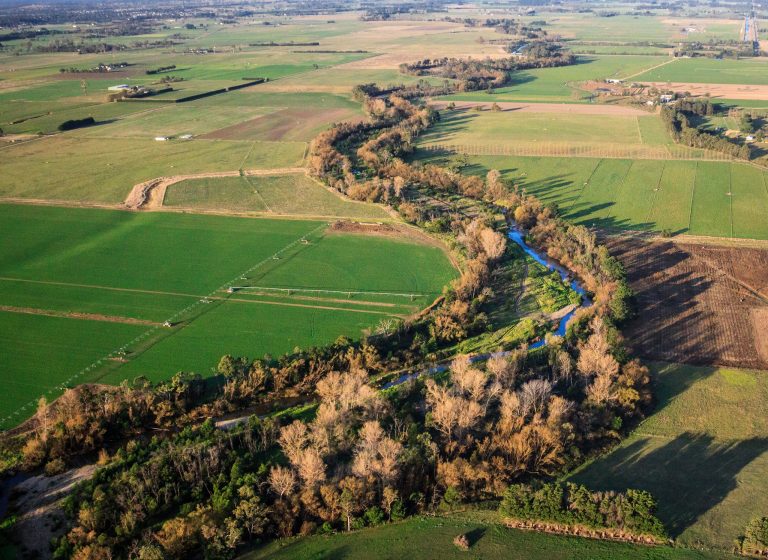
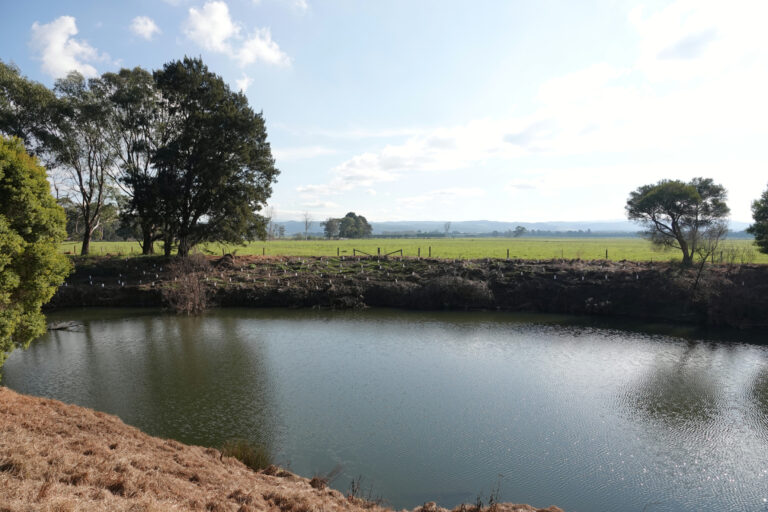
Full steam ahead for rail trail reveg
Volunteers of all ages have planted over 20,000 trees and shrubs along the popular Gippsland Plains Rail Trail, transforming what was once bare, neglected land into flourishing forests filled with native plants and birdlife.
The Gippsland Plains Rail Trail winds through Central Gippsland on Gunaikurnai Country, passing through the towns of Glengarry, Toongabbie, Cowwarr, Heyfield, Tinamba and Maffra before finishing at Stratford. The 63 kilometre journey takes in views of the Great Dividing Range and crosses some of the region’s major rivers, the Durt’Yowan (Latrobe), Carran Carran (Thomson) and Wirn Wirndook Yeerung (Macalister).
Over 3,000 cyclists, walkers, runners and horse riders use the trail every month but 25 years ago this popular tourist attraction was nothing but an abandoned railway line flanked by degraded, bare land.
“We started from scratch, and saw revegetation as an important part of what we wanted to do,” said Helen Hoppner, Chair of the Committee of Management and one of the original group of dedicated volunteers who campaigned for the old railway line to be turned into shared recreation path.
With the aim of reinstating an endangered Red Gum Grassy Plains, Ecological Vegetation Class (EVC) –the volunteer committee partnered with local schools, Landcare and communities along the trail to begin work restoring the surrounding landscape.
Apart from scattered patches of remnant Red Gum vegetation, most of the land along the old railway line was bare from over-grazing and had been neglected since the railway line closed in the 1990s.
“The first lot of trees was planted about 25 years ago by Glengarry Scouts at Eaglehawk Creek. That started our connection with schools and organisations,” said Helen.
Since then, volunteers have led 18 planting events along the trail including the much-loved annual National Tree Day event with local primary schools.
“The contribution of the schools is absolutely critical to our tree planting program,” explains Helen. “Without them, and local Landcare groups, this would not be getting done as quickly.
Kids love a tree day. They’re out digging holes, watering plants and learning to put a new tree in the ground. It’s their future.” In Cowwarr, seeds planted by local primary school children and Landcare volunteers have transformed the environment. “They’ve created a forest!” said Helen. “Cowwarr station ground is now filled with birdlife – wrens, robins and lots of beautiful little birds. We’re also noticing swans up near the Maffra section where wetlands naturally formed in the trenches beside the rail trail.”
It’s not just school children who love putting a tree in the ground. All along the rail trail are enthusiastic volunteers supporting the revegetation efforts.
In Traralgon, a local cycling group is working to establish a Red Gum forest along a stretch of the trail between Traralgon to Glengarry, while volunteers from a mental health group keep the newly planted areas at Eaglehawk Creek in top shape with regular weeding, watering and mowing.
Helen says one of the reasons so many people want to help with the revegetation work is because the rail trail and eight station grounds are right in the heart of communities, making them easy to access and highly visible. “People can watch the young plants grow and thrive and see the difference they’re making to the landscape.”
“A lot of people love the trail, want to use it and want to help it,” she said. “Everyone is working together, and they all know there is plenty of scope for more works on the trail.”
Other partners involved in planting and protecting remnant vegetation include Rotary Maffra, Latrobe Catchment Landcare Network, Maffra and District Landcare Network, Glengarry Landcare Group, Wellington Shire, Latrobe City Council and West Gippsland Catchment Management Authority.
Next stop on this revegetation journey is to establish more biolinks along the trail and plant out remaining sections of bare land, particularly between Heyfield and Stratford. Anyone interested in getting involved can visit gippslandplainsrailtrail.com.au for more information.




CMA wants young people on Board
West Gippsland Catchment Management Authority (the CMA) is inviting the next generation of natural resource management leaders to join them at the table of the CMA Board.
Applications are now open for the newly established role of Associate Board Director – Youth Member. The position is aimed at people aged between 18 to 34 with an interest in environmental and water management living within the CMA catchment.
“This is a fantastic opportunity for a younger person who perhaps doesn’t have Board or public sector experience to join us at the table and help shape the future of the region’s waterways,” said Martin Fuller, CEO of the CMA.
“Improving and protecting Gippsland’s natural environment is a team effort and we want a diversity of voices and perspectives on our team.”
The Associate Director role is a paid position for up to two years and involves participating in board meetings and adding input to the board on a range of issues regarding environmental, water and land management
Previous board experience isn’t necessary.
“This is a learn as you go opportunity with full support, training and mentorship provided. The successful candidate will have the chance to develop and grow skills in the areas of strategic planning, managing risk, governance and overseeing the operations of the organisation,” said Martin.
Chair of the CMA Board Mikaela Power welcomed the addition of a youth director to the eight-member Board and encouraged potential applicants not to think the role was out of reach because of age or experience.
“Having different perspectives on our board helps us to make better decisions. Our board includes farmers, scientists, policy-makers, business owners and other professionals. We each bring our unique skills, experience and perspectives while seeking to protect and restore West Gippsland’s land and waterways, with the help of our partners.
“If you love rivers like we do and want to make a difference to our region’s natural environment, I encourage you to apply.”
Applications close Friday 16th of August.

Landcare Grants empower inspiring volunteers
Landcare volunteers across West Gippsland have received $337,250 in funding to protect and restore the region’s environment, in the 2024 Victorian Landcare Grants.
Minister for the Environment Steve Dimopoulos announced the recipients of the $3.62 million Victorian Landcare Grants at the Victorian Landcare Awards ceremony in July.
Across the state, more than 227 projects were allocated grants worth up to $20,000 to fund on-ground and educational projects focused on biodiversity protection, while a further 296 support grants will assist environmental volunteer groups.
West Gippsland Catchment Management Authority manages the grant process for the region.
“I’m delighted that local Landcare and environmental groups in West Gippsland will share in $337,250 funding from this year’s program to empower them to continue their vital work protecting and restoring our natural environment,” said Martin Fuller, CEO of West Gippsland CMA.
A total of 21 grants were awarded to Landcare and environmental volunteer groups in the West Gippsland catchment for projects including revegetation, habitat protection, river restoration and community engagement.
“As a proud partner of Landcare, we look forward to seeing all these exciting projects and initiatives come to life over the next 12-18 months as we continue our role supporting, facilitating and championing Landcare in West Gippsland.”
Successful projects extend across the region, from Archies Creek to Maffra, and include initiatives such as safeguarding remnant forests, restoring swampy woodland to protect threatened species, developing a community nursery and inspiring the next generation of Landcarers.
Springsure Hill Landcare Group received a $15,494 grant for their project developing strategic biolinks in the Springsure Hill Landcare area, north-east of Warragul, to increase biodiversity and save threatened and vulnerable flora and fauna.
President Gill Oscar says the grant will enable them to develop a biolinks map and plan for the area so they can be more strategic with their revegetation efforts.
“We’re trying to build a biolinks mindset in the community and the grant funding gives us a chance to do things that we wouldn’t have had the resources to do, including engaging with our community and getting them involved.
She said members had also benefited from the grant application process. “Applying for a grant helps us sharpen our thinking, determine what’s most valuable for the area gives members a focus.”
Another 26 local Landcare groups were awarded $500 support grants to assist with running costs and communication activities, such as newsletters and websites.
The Victorian Landcare Grants and Victorian Junior Landcare and Biodiversity Grants support the implementation of Protecting Victoria’s Environment – Biodiversity 2037, the Victorian Government’s long-term plan to protect the state’s environment.
A full list of all grant recipients can be found at www.environment.vic.gov.au/grants/victorian-landcare-grant s
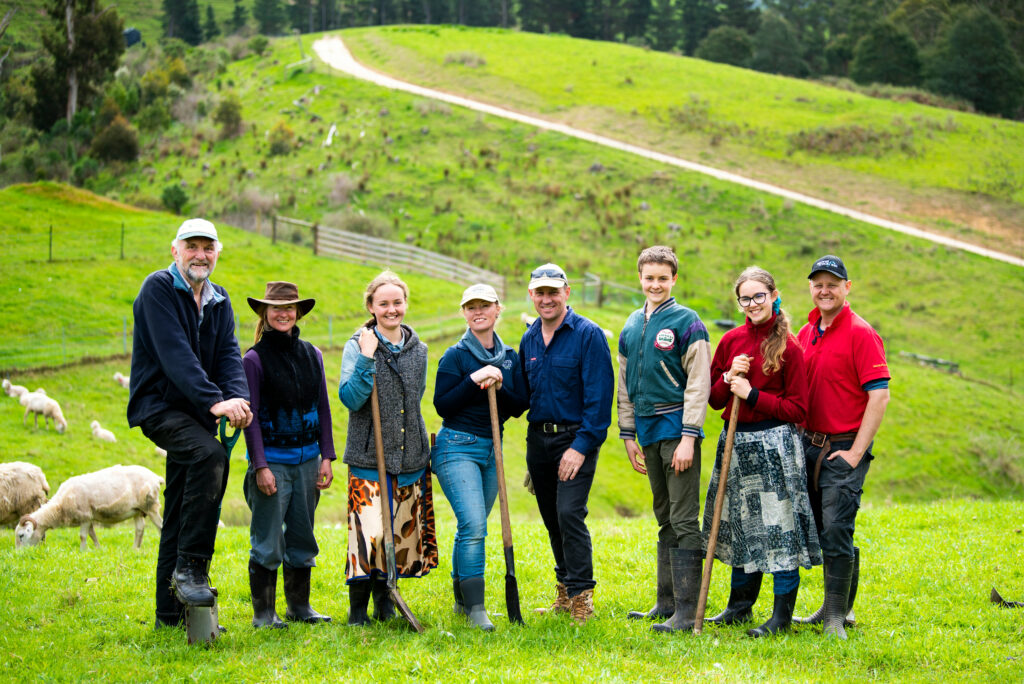
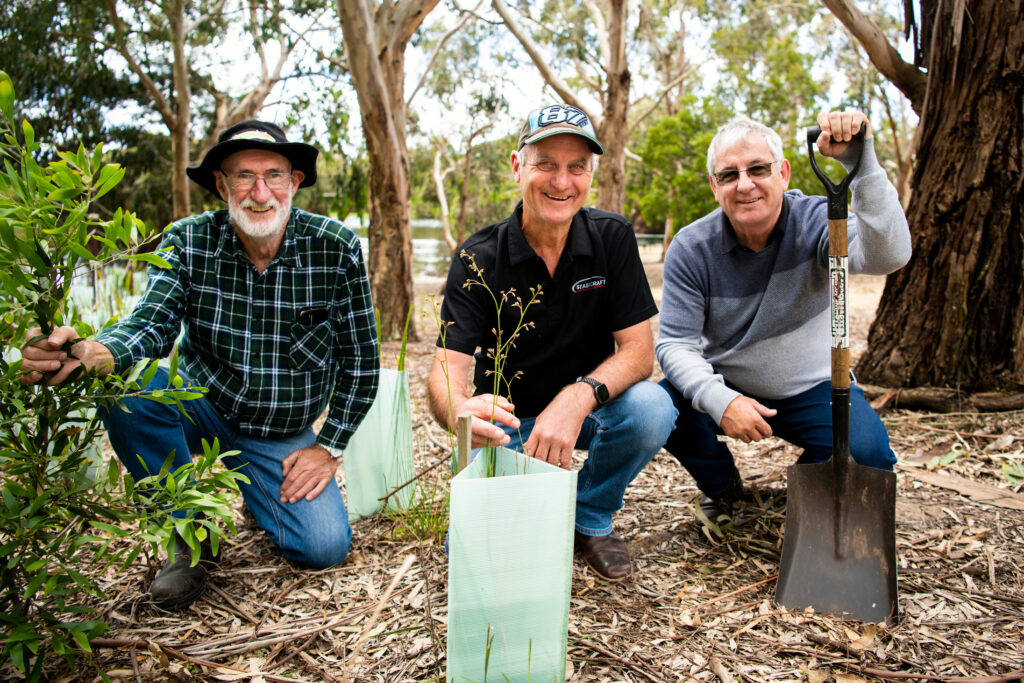
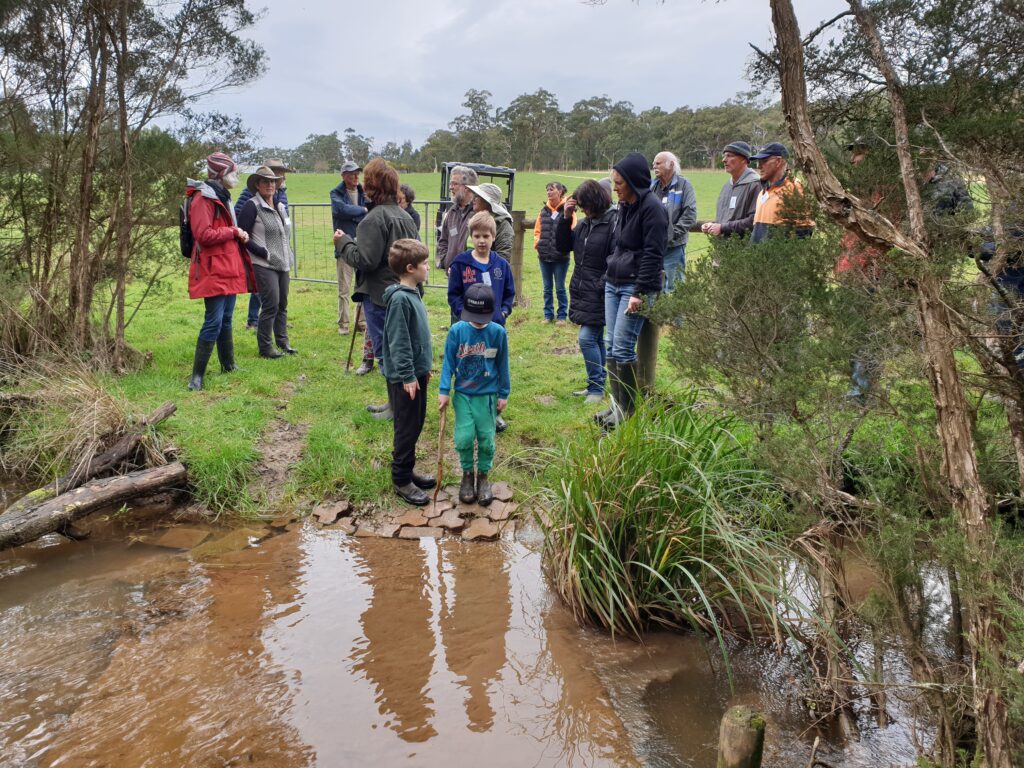
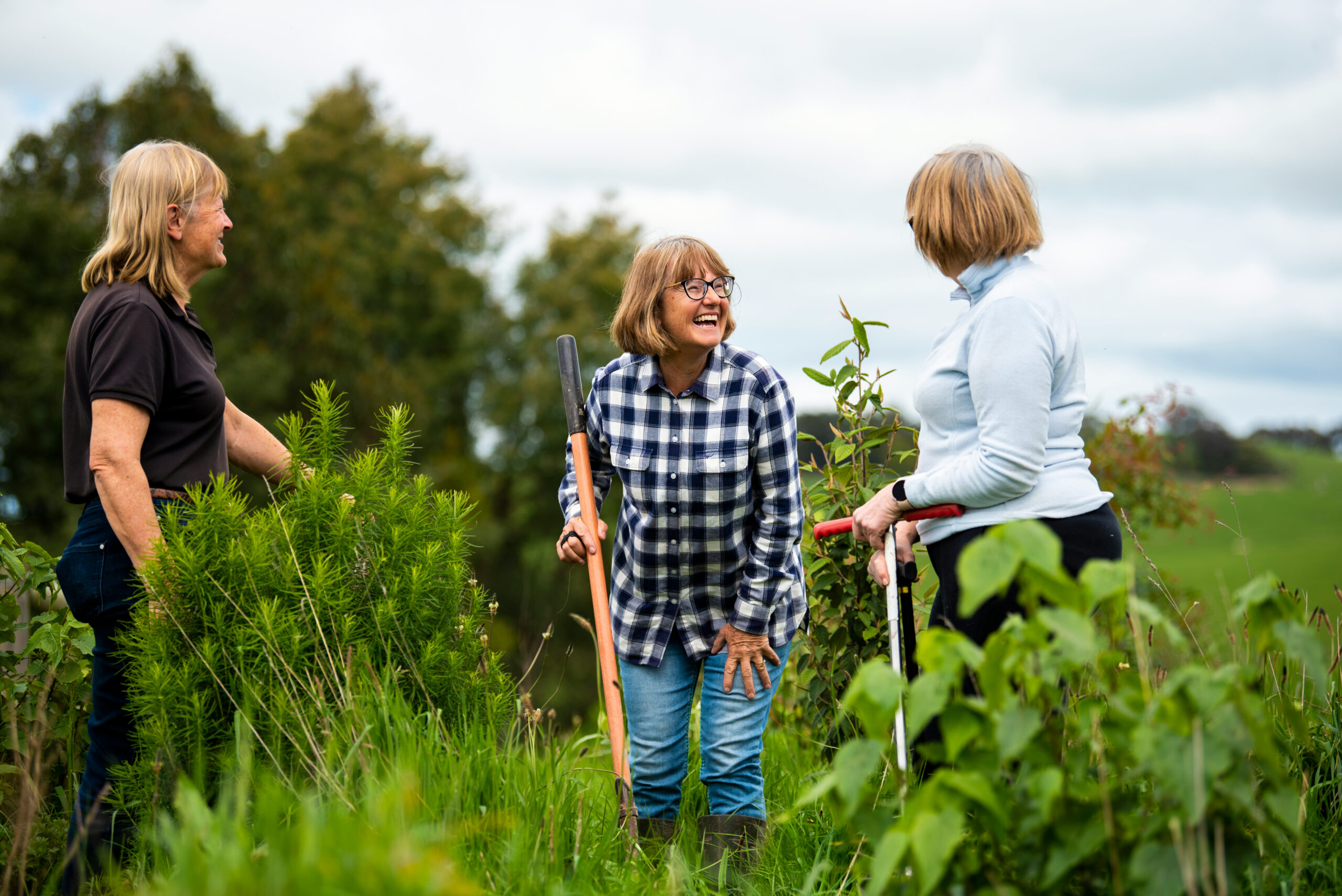
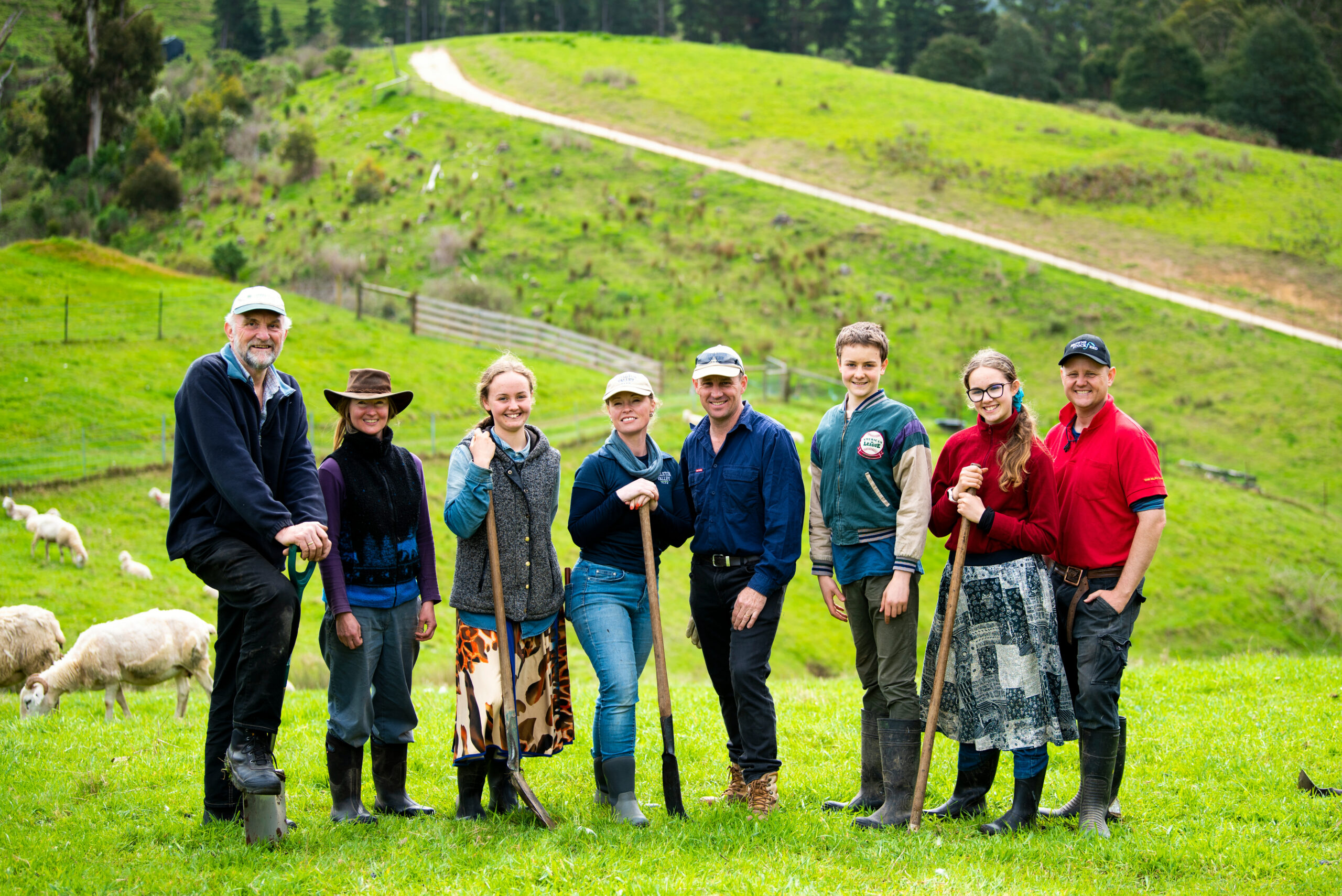
Youth Board Member vacancy
Interested in making a difference and creating a better natural environment?
Do you live in West Gippsland and love rivers like we do? Would you like a place at the table with us to help plan a better future for our region’s waterways?
Why not get involved as our Associate Board Director where your greatly valued perspective will help shape and achieve Natural Resource Management outcomes.
About the role:
We’re looking for an Associate Board Member aged between 18-34 to join our current Board of eight directors.
This is a learn as you go opportunity, with full support, training, and mentorship available.
- No previous Board experience needed
- You’ll attend about eight face-to-face meetings per year
- You’ll be paid for your time
- The role is for up to two-years
For more information, please download the position description.
You can also download this flyer to share among your networks
How to apply:
We’d love to hear from you. To apply, please submit your resume and a brief cover letter outlining why you are interested in the opportunity to recruitment@wgcma.vic.gov.au by Friday 16th August.
If have questions or want to have a confidential chat about this role, please contact Madelyn Brand, Organisational Development Lead on 0421 778 201.
At WGCMA, we share a commitment to value and embrace diversity in all forms; so that our work environment is a safe space we can all belong. All qualified applicants will receive consideration for employment regardless of their background, identity, orientation, ability or thinking style.
If you need assistance during the application process for accessibility reasons please contact Madelyn Brand, Organisational Development Lead on 03 5175 7839 or madelynb@wgcma.vic.gov.au.
We acknowledge and pay our respects to the Traditional Owners of the region, the Gunaikurnai, the Bunurong, the Boonwurrung and the Wurundjeri Peoples and pay respects to Elders, past, present and emerging.
The severity of the major rainfall event across Gippsland in 2021 led to a rapidly eroding gully posing a threat for the landholder, public and natural environment on a farm near Stratford. The solution was a team effort to engineer and construct a large rock chute to protect the Avon River.
During the rainfall event, water rushed down an existing drainage line into the Avon River, damaging vegetation, dumping a huge load of sediment into the waterway and severely eroding the bank.
The resulting erosion was also rapidly progressing back up the gully and heading towards a nearby public road. This ‘upslope erosion’, known as a ’headcut‘, is often caused when water has to drop over a vertical edge to enter the river.
“In rivers with historic bed deepening (otherwise known as incision) water entering the river has to get from the level of the floodplain to the level of the river. In doing this the water expends all its kinetic (movement) energy, causing rapid erosion of the underlying soil. If you picture the power a waterfall has when it hits the bottom of its fall, it’s easy to imagine how much damage water can do when it’s falling over a vertical or near-vertical edge,” explained Elsa Burnell, West Gippsland CMA’s Project Officer.
In the Avon River system this process is exacerbated by the extremely erosive subsoils and large amount of historic deepening of the River channel that occurred in the 80s and 90s.
”The system is still adjusting to this,” said Elsa.
Without intervention the erosion would worsen with each rainfall event, causing further damage to the waterway, the surrounding property and potentially impacting the road.
“A headcut like this can easily travel 100m in one rainfall event,” said Elsa.
Elsa worked with a team from West Gippsland Catchment Management Authority and the landholders to assess the damage and develop a plan to restabilise the bank and gully to prevent further erosion.
Because of the steep slope and constrained site, specialist engineers were engaged to help design a solution.
Over 1000 cubic meters of large rock was delivered to the site and placed in the eroding gully to create an armoured rock ‘chute’ The rock chute guides the water into the river and allows it to dispel its energy on a surface that is resistant to erosion.
“We needed to get the water from the higher floodplain level into the river without doing so much damage,“ Elsa said. Essentially, a rock chute allows the water to expend its energy on a surface that won’t erode.”
Protecting this gully from erosion will not only protect the road and surrounding paddocks, it will also prevent a huge amount of sediment from entering the river system and flowing on into the Gippsland Lakes.
After constructing the rock chute with machinery, the team then got to work on revegetating the surrounding area. The plants will help to protect the structure, slow future flows and further stabilise the riverbank providing resilience in future rain events.
A visit to the site two years later revealed that the rock chute and planting were holding strong and in good shape despite a number of flood events since construction. “I was really pleased to see that there was no new erosion and no sediment getting into the river,“ concluded Elsa.



Flood Recovery Program
In June 2021, widespread storm and flood damage across Gippsland impacted in many catchments.
Since then, a comprehensive flood recovery program has been rolled out across more than 150 sites in partnership with local government, agencies and landholders supported by funding from Department of Energy, Environment and Climate Action (DEECA).
Since the event, the flood recovery program delivered:
- 150 waterway structures.
- Just under 37 kilometres of fencing.
- Over 27 hectares of vegetation.
- Earthworks at 165 sites.
- 155 management agreements with landholders.
New life for Noojee Reserve
In June 2021, widespread flooding heavily impacted Gippsland catchments including the famous town of Noojee located high in the headwaters of the Durt’Yowan (Latrobe River).
The river is a much loved feature running through the town, providing shade and recreation at many spots along its banks.
The Noojee Reserve is usually a tranquil spot with shelter, picnic tables, winding tracks and toilet facilities. In the June 2021 storm event, the public reserve was completely inundated as the river broke its banks and roared through the park taking out banks, trees and paths.
“This public space gets a large flow over it when the river is high,” said Dan Cook, Project Coordinator for West Gippsland CMA.
When the initial emergency was over and the area declared safe, the team at West Gippsland CMA moved in to assess the damage. Working in partnership with Baw Baw Shire Council, a large amount of debris covering the reserve was removed and the debris taken away.
“The park was inundated and the high flow had exposed part of the banks that we had repaired in an earlier event,” said Dan.
The fast moving event had moved large logs that had previously been installed to support the river bank causing it to slump and wash out.
The team used rock to repair and reinforce the banks. Local contractors worked under the guidance of the CMA to expertly stabilise the banks, armouring it to withstand future events.
“We put the rock in, shaped the bank back up and stabilised it – job done!” Dan said.
Now the reserve is open again, the river has slowed and locals and visitors are once again enjoying fishing, walking and picnicking at this tranquil spot in the heart of Noojee.
